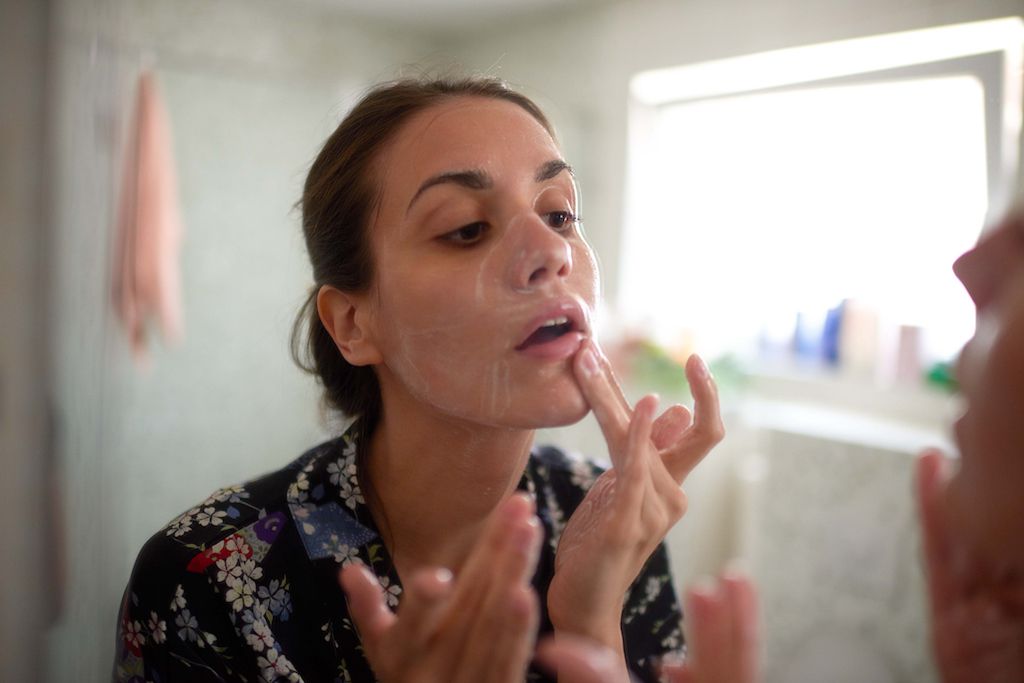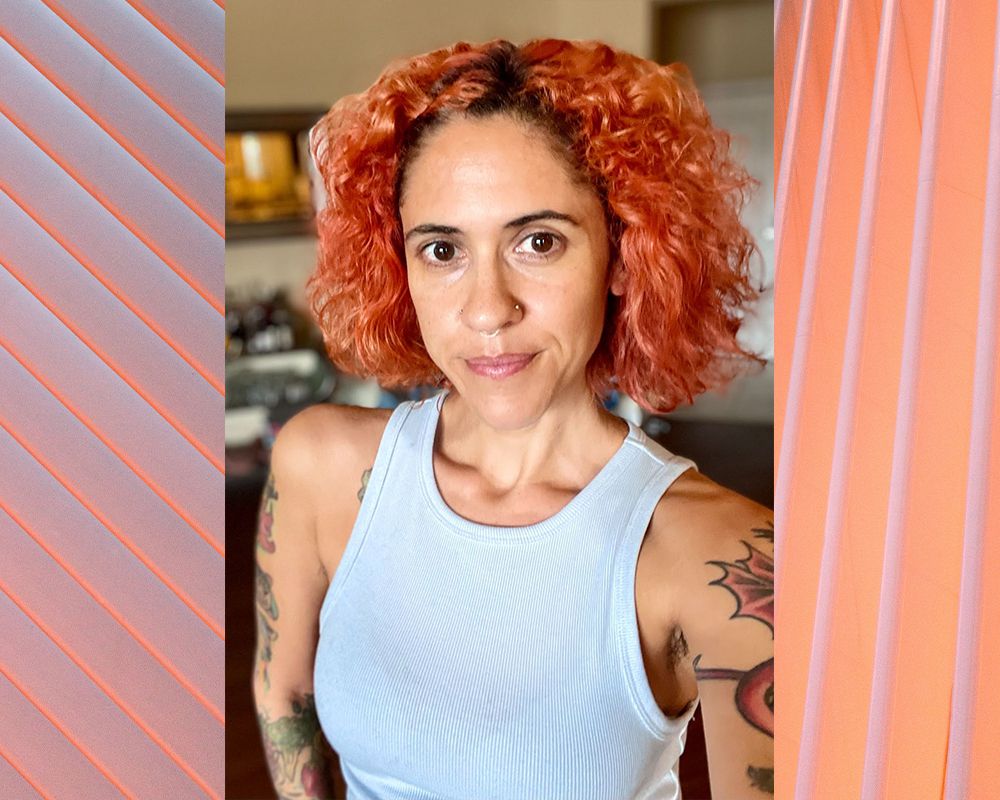How to Tell if Your Skin Barrier Is Actually Damaged (And What to Do About It)

After years of pushing exfoliating acids and retinols, the newest beauty trend is undoubtedly products that nourish the skin barrier, which leads us to one very important question: What is the skin barrier?
I sat down with my dear friend and fellow New York City board-certified dermatologist Dr. Shari Marchbein to discuss everything you need to know about the skin barrier.
Meet the Expert
- Shari Marchbein, MD, FAAD, is a board-certified dermatologist. Marchbein’s academic and clinical interests include the treatment of acne, in particular adult female acne, acne scarring, and rosacea.
What Is the Skin Barrier?
The skin barrier, also sometimes referred to as the “moisture barrier” or “acid mantle,” is a term used to describe the top layer of your skin.
When we talk about skin, it has three main layers: the epidermis, the outermost layer of the skin; the dermis, the middle layer of the skin that contains collagen, elastin, and the skin’s nerve and blood supply; and the subcutaneous fat that forms a barrier between skin and muscle.
The epidermis contains three types of cells:
- Keratinocytes—these cells actually form what you think of as your “skin.” They are commonly referred to as bricks, with natural oils, ceramides, and cholesterols providing the glue that anchor them together into a mostly impermeable wall.
- Melanocytes—these cells produce melanin. Epidermal melanin absorbs ultraviolet radiation and protects underlying structures from UV damage. Melanin also gives the skin its natural skin tone.
- Langerhan cells—these are cells that help the skin mount an immune response to bacteria, fungi, and viruses.
Most references to the skin barrier are focused on the very top layer of the epidermis, the statum corneum.
Why Is the Skin Barrier Important?
The skin barrier has two general roles: Keep the good stuff in—and the bad stuff out. The skin barrier protects the internal body from physical toxins (such as pollution and harmful chemicals) and ultraviolet radiation from sun exposure. The skin barrier also helps the body to hold onto natural moisture by preventing transepidermal water loss.
Marchbein notes that “if the outermost layer of the epidermis (the stratum corneum) doesn’t contain enough water, skin will lose elasticity and appear dry, rough, and flaky. Poorly hydrated skin is also unable to maintain an appropriate intact skin barrier, leaving the skin more vulnerable to damage from external/environmental sources.”
A healthy skin barrier is also key to obtaining hydrated, glowing, even skin.
Signs of a Damaged Skin Barrier
Disruption in the core functions of the skin barrier can present in a number of ways, including:
- Rosacea and eczema. These conditions are partly caused by a genetic defect in the skin barrier. However, additional outside damage to the skin barrier can cause these conditions to flare up.
- Chronic skin irritation
- Itchy skin
- Dehydrated, dull skin
- Hyperpigmentation
- Skin infections
- Delayed wound healing
What Can Damage Your Skin Barrier?
In general, life damages the skin barrier.
- Pollution
- Wind
- UV radiation
- Frequent handwashing
- Use of cleansers that strip the skin barrier of its natural oils
- Overuse of exfoliating acids
- Use of harsh physical exfoliants
- Smoking
- Lack of sleep
- Stress
- Nutrient-light diet
A combination of avoidable and unavoidable daily habits cause varying degrees of damage to the skin barrier.
How to Treat a Damaged Skin Barrier
Be Kind to Yourself
My life philosophy is “be kind to yourself, be kind to others, and be kind to your skin.” The first and most important approach to taking care of your skin barrier is to frame your skincare and cosmetic treatment routines as a practice to respect and celebrate your skin, not one to strip your skin of its natural pores and pigment. Glass skin does not exist. You will never look like you with a filter, but radiance and glow can be achieved.
:max_bytes(150000):strip_icc()/GettyImages-1214832465-6f16a1d492144681b9fa468915ffea80.jpg)
Pare Down Your Skincare Routine
I cannot exaggerate the benefit of seeing an expert—aesthetician or board-certified dermatologist—to curate your skincare routine. I review my patients’ skincare routines at each appointment, and for each product, I always ask, “Why are you using that?” The answer is often “I don’t know” or “I heard it was good.”
You can curate a targeted skincare routine with an expert or you can do it with a plethora of research on the internet, but I want you to understand what a product is doing for your specific skin needs before you start it. Of course, that means you should also sit down and decide: “What am I looking to achieve with my skincare routine?” For some, this will be decreased redness. For others, it may be evening the skin tone or controlling acne breakouts. A goal-directed skincare routine will be effective, simpler, gentler, and cheaper.
And remember, your skincare routine will likely vary by the season. Marchbein recommends “using fragrance-free products and being cautious with any product or chemical/ingredient that may exacerbate irritation or inflammation such as alcohol, various acids (such as salicylic and glycolic acid), retinoids (used for acne and antiaging), and other harsh exfoliants” during the colder, winter months when the skin is generally more sensitive.
Use a Gentle (but Effective) Skin Cleanser
Because urban environments damage the skin, it’s important to remove all remnants of pollution from the skin. It’s also important to protect those natural ceramides and oils that form the glue to your skin’s barrier. The ideal cleansing routine removes makeup, small particulate pollution matter, and dirt without stripping this skin. Depending on how many products you have on your skin, you may want to do a “double cleanse” to achieve this. My favorite gentle facial cleansers include Ceravé hydrating cleanser, Laneige cleansing milk, and Versed cleansing balm. Dove body wash is a tried and true cleanser for the body.
Consider a Serum or Moisturizer Designed With Your Skin Barrier in Mind
You can still use your acids and/or retinol, but balance these ingredients with products that are designed to support the skin barrier. You can either layer these ingredients with your actives or use them on days that you skip your actives. Ingredients to look for include ceramides, hyaluronic acid, glycerin, and petrolatum. Most of my acne patients with sensitive skin also use a prescription-strength sulfur cleanser to soothe the skin. Vichy’s mineral89 hyaluronic acid serum can help lock in moisture and counteract the irritating effects of acne treatments. I’ve also become a big fan of Glow Recipe’s avocado serum since its release.
Look for a Multifaceted Moisturizer
Marchbein notes that “the best moisturizers have a combination of emollients and humectants.”
- Humectants attract and bind water, increasing the skin’s water content. According to Marchbein, “they can draw water to the skin either from the environment or enhance water absorption from the top layer of the skin. Glycerin and hyaluronic acid are probably the most well-known humectants in moisturizers, and others include alpha hydroxy acids (glycolic, lactic), panthenol, sorbitol, urea, and propylene and butylene glycol.”
- Emollients are designed to soften the skin and include “many ingredients we are very familiar with such as dimethicone, grape seed and jojoba oils, cocoa and shea butters, stearyl and cetyl alcohols, mineral oil, and petroleum jelly” notes Marchbein.
In addition, moisturizers rich in ceramides help to replace natural ceramides that are depleted throughout the day.
Treat Inflammation
Once the skin is irritated, often anything and everything will worsen that irritation. Check in with your skin each day. Skip exfoliating actives when the skin is feeling a little sensitive and instead reach for your soothing serum or moisturizer. For more significant inflammation, such as rosacea or eczema, see a board-certified dermatologist to treat the inflammation. You’ll often find that you’re able to tolerate a wider range of products once your underlying condition is well managed. However, less will likely always be best for sensitive skin.
Don’t Forget to Take Care of Your Body
We often spend money and time on the face but neglect the body. The body is prone to dryness, itching, dullness, and hyperpigmentation in the same way the face is. Focus on using gentle cleansers on the body and the hands. My favorite body cleansers include Dove body wash and Olay Nourishing Body Wash with B3. My favorite hand cleanser is Aesop hand cleanser (worth the splurge). My favorite hand sanitizers are EOS and Dove, and my favorite hand cream is La Roche-Posay Cicaplast. All of these products are skin focused with protective and nourishing ingredients.
Take Care of Yourself
You’ve, of course, heard the phrase “Your skin is the largest organ in your body.” The key here is that your skin is part of your body. What you eat, how much your sleep, and how you release stress all impact your overall health and your skin health. The line between self-care and skincare has become blurred in the wrong direction. Wearing a face mask may or may not help sustain you through another week, but a good night’s rest or a hardy laugh will support your skin health.
The Takeaway
Your skin barrier is a precious friend that protects you from all things bad in the world while also holding onto precious, life-necessary water. However, our outside environment and skincare routines are taking a toll on our skin barrier. The new wave of skin-barrier-friendly skincare products are an opportunity for a skincare reset, with a new focus on curating a functional, gentle, effective, and enjoyable routine.
The One Product That'll Save Your Sensitive Skin This Winter








